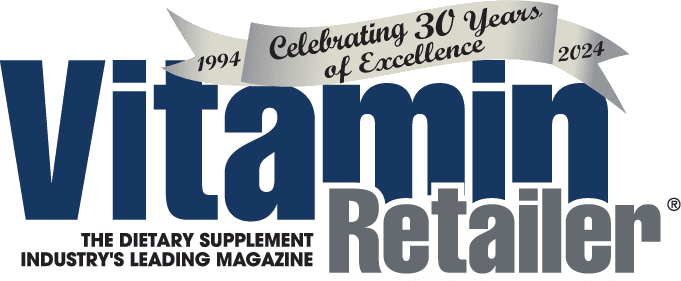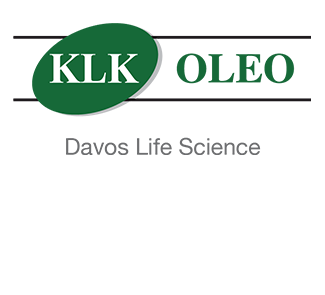When it comes to pain, consumers are still using conventional OTC and prescription drugs, so communicating the benefits of natural alternatives is the goal.
Unfortunately, pain is extremely common. Millions suffer from acute or chronic pain every year and the effects exact tremendous costs in health care, rehabilitation and lost worker productivity, as well as the emotional and financial burden it places on those suffering and their families.
According to the Institute of Medicine of The National Academies, 100 million Americans have chronic pain. When asked about four common types of pain, respondents of a National Institute of Health Statistics survey indicated that lower back pain was the most common (27 percent), followed by severe headache or migraine pain (15 percent), neck pain (15 percent) and facial ache or pain (four percent). “It is certainly a market that isn’t going away,” said Cheryl Myers, head of education and scientific affairs at Wisconsin-based EuroPharma, Inc.
John Durkin, vice president of sales and marketing with Pennsylvania-based Boiron USA, noted recent research that addresses women and pain. According to the study, when it comes to muscle pain, most women (89 percent) suffer from lowgrade aches and pains and are affected every day from common activities such as housework and yard work or from sitting at a computer too long. Sixty-three percent experience weekly pain.
“According to another study, most women (79 percent) are attempting to limit their overall usage of traditional OTC medicines,” Durkin added. “While they believe in the efficacy of OTCs, they feel these products aren’t ‘good’ for them, especially when used frequently.” When asked specifically about external analgesics and given a brief explanation of homeopathic medicine, 46 percent of category users said they would likely purchase homeopathic medicine.
A Natural Hurdle
The potential for the natural market in the area of pain relief is unlimited; however, the education-versus-marketing component to attract the largest customer base as well as the non-buying public to the natural market arena is weak at best, noted Lou Paradise, president and chief of research with New York-based Topical BioMedics Inc., maker of the Topricin® line of topical natural pain relief products.
“More people are shopping at the health food store than any previous time in history,” he said. “However, the largest number of people who suffer with various chronic pain ailments tend to be those with a conventional, ‘scripted’ and conservative mindset who need what we offer the most, but who are not shopping in our industry. Beyond pricing, there is a common reason we are still not attracting this important population to more natural approaches.”
The largest population of available customers beyond LOHAS has found that the natural approach for them has not worked, or not worked sufficiently enough to motivate them to become regular subscribers, Paradise added.
“This isn’t because there is no merit or viability to the offerings; this is a failure of communication and education to this consumer. Consumers need to be educated on the process of healing, understand how natural products work and taught to have reasonable expectations in terms of how quickly they will experience relief.”
Ingredient Watch
There has been considerable research regarding chronic pain and vitamin D, yet it hasn’t centered on its key pain relief component— its important role in maintaining healthy cartilage that may prevent degradation of the joints.
“Some exciting new research shows a relationship between arthritis, joint health and vitamin D deficiency,” noted Myers. “In fact, vitamin D deficiency was noted in 69 percent of the patients with inflammatory joint diseases or connective tissue diseases, 77 percent with soft tissue rheumatism, 62 percent with osteoarthritis, 75 percent with back pain and 71 percent with osteoporosis.”
Other researched ingredients have evolved dramatically, said Myers, particularly curcumin from turmeric and boswellia. “While both Have been part of ayurvedic medicine for generations, they have benefited from some very real advances, too,” she said.
As for curcumin, the majority of turmeric products on the market are regular formulas, standardized to 95 percent curcumin.
“Unfortunately, this formulation of curcumin is poorly bioavailable, so it doesn’t pass easily from the gastrointestinal tract into the bloodstream,” Myers said.“In addition, much of the curcumin that does reach the bloodstream quickly converts into other compounds.
“None of this has gone unnoticed; there have been many attempts to make curcumin more absorbable and have it remain in the bloodstream longer so it can be more beneficial,” Myers said. “Many products have focused on adding piperine, for instance. But piperine can have some big disadvantages: It interferes with almost every prescription drug and can have terrible effects on the liver.”
BosPure® boswellia, featured in many EuroPharma formulas alongside BCM-95®, is what Myers said she would call an advanced form. “While it reduces inflammation like curcumin, it does so by inhibiting the inflammatory enzyme, 5-LOX.”
Other important ingredients for pain relief include the amino acid combination DLPA (D,L-phenylalanine) to improve mood-elevating chemicals in the brain (dopamine, epinephrine and norepinephrine) and relieve muscle pain. The enzyme nattokinase helps promote blood flow so that other compounds that are carried in the bloodstream (such as curcumin, boswellia and pain-killing endorphins) can reach the areas where they are needed the most.All four of those ingredients are included in Curamin®, Myers noted.
Often used in homeopathic medicine, the primary active ingredient in Boiron’s Arnicare line of pain relievers is Arnica montana. This line includes a gel, cream, ointment, oral pellets and, new to the line, oral tablets.
Boiron’s line also includes Arnicare Arthritis Tablets. It combines Arnica montana with eight other homeopathic ingredients for joint pain and rheumatic pain: Benzoicum acidum, Bryonia alba, Chamomilla, Dulcamara, Kali iodataum, Pulsatilla, Rhododendron chrysanthum and Rhus toxicodendron.
Paradise would argue that specific ingredient combinations are necessary.
“Although beneficial, arnica oil can cause serious issues with the skin, especially in open wounds, while homeopathic arnica is limited to contusion, bruising, etc., and does not work in all cases,” he said. “Indeed, there are certain types of pain issues where a number of homeopathic medicines, when combined, provide more relief then arnica alone. It is a primary reason when addressing chronic or acute pain and/or pain/injury prevention why products having more than one homeopathic medicine have been shown to provide a wider range of benefits, more quickly and demonstrably.” Most people find supplements such as SAM-e, tumeric, ginger, bromelain and MSM work faster than glucosamine, he added.
Innovation Over Novelty
Last fall Boiron introduced the newest addition to its Arnicare line—Arnicare Arnica Tablets. “Boiron’s traditional oral form is a pellet,” Durkin said. “Now, this more conventional melt-away tablet will help those less familiar with homeopathy discover the benefits of this widely used pain reliever. To the retailer, it helps connect consumers other than core natural product shoppers with the Arnicare line.”
According to Paradise, combination products are really the best ones: “That is because, as a rule, combinations provide an increased performance and measurable difference in shorter time frames,” he said. “Liquid vitamins and minerals improve bioavailability, are easier to take and liquid users are more compliant. So it can be said that liquids and chewable nutrient supplements are certainly a better delivery system.”
“I think there are always going to be advances in delivery systems, that is, preferences for tablets, capsules, powders or some kind of food matrix,” added Myers. “Some of them can be very helpful, if it allows people who ordinarily don’t like to take standard supplements, but some of these delivery systems are just simply novel, and may not provide meaningful levels of ingredients to actually get the job done.”
Talk About Research
While extensive knowledge of important health studies are generally an asset for natural product retail staff, Paradise argues it may not make the best case when talking to customers.He noted that the while the industry should pay attention to well-supported health studies, since it cannot state a therapeutic claim, retailers should concentrate on educating the public about well-researched, quality products.“Manufacturers would be wise to spend their time and resources educating the health food stores on the value of their products, what they do, how they work and how these benefits support health.”
Lifestyle choices should be discussed as well, Paradise said. “[Retailers] should also spend time helping people understand the roles of basic nutrition and hydration as well as how their products support a healthy lifestyle, and how a healthy lifestyle prevents many pain issues people are now suffering from. When you take the time to educate consumers and provide them a comprehensive, holistic picture on health and wellness, they will benefit— and you will earn their trust as a valuable resource, turning them into loyal customers.”
Expanding Your Reach
Manufacturers and retailers want to sell products and prosper, said Paradise, “but there are other aspects of our business that will help us grow and profit,” he added, explaining that a key factor is the need for a bridge between conventional medicine and complementary care.
Paradise explained that Topical BioMedics has focused on building strong educational platforms to address many issues pain management, while constantly trying to get the attention of the conventional script-minded community and their doctors. “We are achieving success in this arena because of the highly demonstrable nature of our products.Our commitment to education and improving medical treatment protocols are getting measureable outcomes, including a reduction of need/dependency for all classes of chemically based oral pain medications,” Paradise concluded.“This, we feel, is a worthy goal to continue to pursue.”
For a complete list of references, visit vitaminretailer.com.










